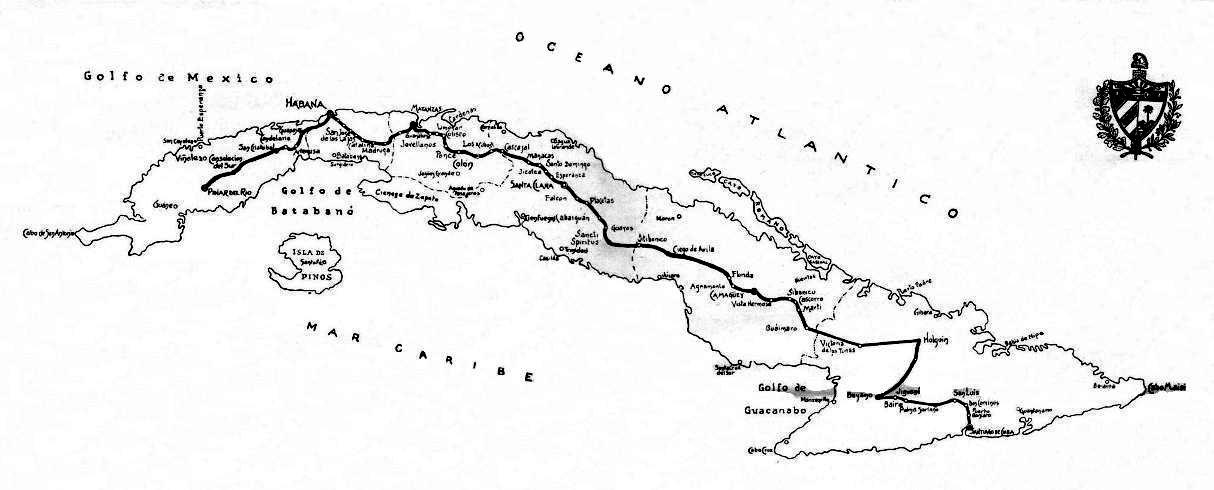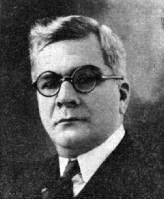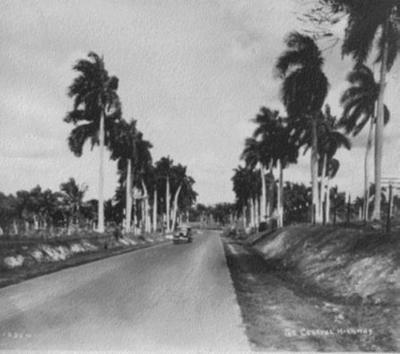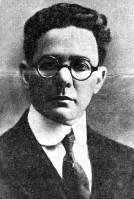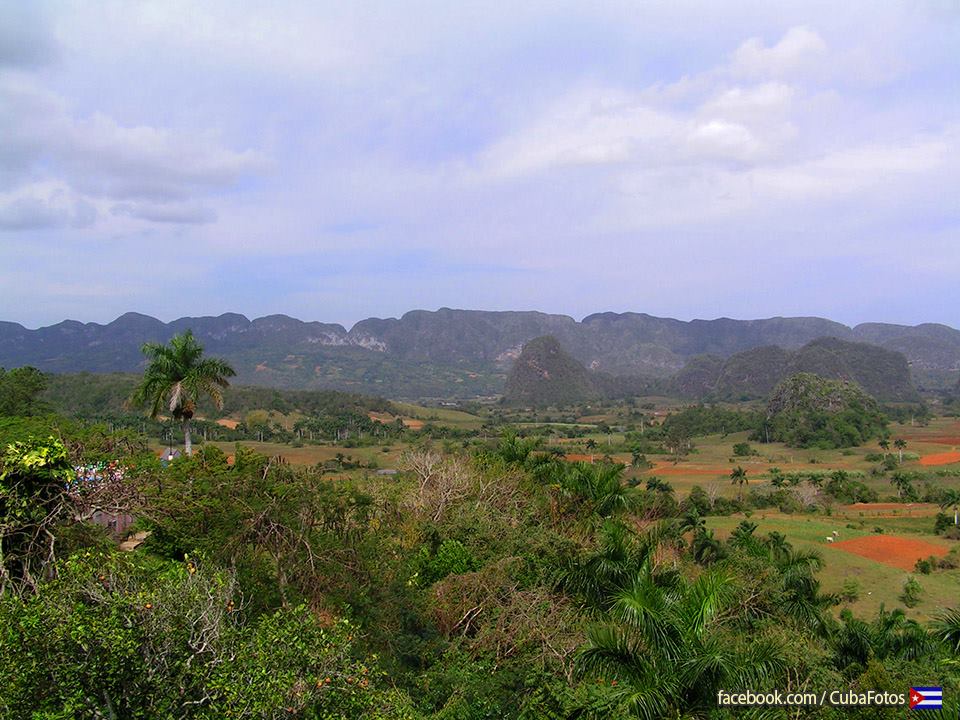CUBA’S CENTRAL HIGHWAY HISTORIC CONSTRUCTION.
The Carretera Central (Central Road) is a west-east highway spanning the length of the island of Cuba.
Formal construction began in 1927 during the Gerardo Machado administration. It runs along the island of Cuba from west to east, between Pinar del Río and Oriente. It is a two-way single road. It represented an extraordinary economic value during Machado and Fulgencio Batista’s administrations. It facilitated faster transportation and effective inter-province commuting.
The Carretera Central starts in the village of La Fé, a hamlet of Sandino, in the western province of Pinar del Río, and links all major cities and province capitals except Cienfuegos. It runs about 1,250 km (777 mi) to Baracoa in the eastern Guantánamo province.
This great artery of national communication united the principal cities of the island. With its lateral it will not only open traffic among the six provinces (Now 16) but will provide a desirable trade within the provinces themselves. Communities that have remained stationary or backward for lack of egress will now develop and flourish.
Great as it is, this highway construction forms only part of a pretentious administrative program, which includes virtually all public works and institutions. Our towns are to have adequate waterworks, hospitals, asylums and schools. Homes will house the aged and needy, child welfare will receive close attention, agricultural and farm help will be provided.
The Central Highway–its importance merits the capitals–is built to a width of six meters (the meter is 39.37 inches) between cities, with a dirt pathway on each side one and three-quarters meters wide. Portions passing through towns and cities are widened to eight meters exclusive of sidewalks.
Through its entire length the highway has a concrete base .15 meter (nearly six inches) thick. This is covered with the asphaltic paving material known as “Warrenite Bitulite.” Through principal cities this is substituted by granite blocks.
The Central Highway was built by two entities. Warren Bros. Co., of Boston, Mass., has the contract for Pinar del Rio, Habana, Camagüey and Oriente provinces, while the Compañia Cubana de Contratistas (Cuban Contractors Co.) has Matanzas and Santa Clara provinces. Between them there reigns that spirit of friendly rivalry as to which best can work and best can serve. Needless to say both are giving ample proofs of their efficiency and activity.
Steel bridges along the highway were constructed under the supervision of the H.C. Nutting Co., of Cincinnati, Ohio, when built in the United States and by an engineer of the Department of Public Works when fabricated in Cuba.
In all concrete work government inspectors view the mixing of the materials and test the product, which must conform strictly to requirements as to strength and composition. Division chief engineers are obligated to inspect all construction before acceptance and require strict conformity to specifications.
Work was done on the 32 sections into which the Central Highway was divided. To show how rapidly the work advanced it may be explained for the complete finished of the 383 bridges, culverts, drains and similar structures to be built.
The great Cuban road constitute one of the world’s most picturesque highways, passing through a bewildering variety of tropical scenery and flora. The incomparable beauty of the “Pearl of the Antillas” becomes of easy access!
Of Carlos Miguel de Cespedes, Cuba’s dynamic Secretary of Public Works, little need to be said. His genius changed the face of the Republic. The “dreams of Cuba’s Jules Verne” are being realized, to the joy of his friends and adherents and to the confusion of his critics.
OfficialConstructionBulletin/InternetPhotos/CubanNationalCommittee.
The Cuban History, Hollywood.
Arnoldo Varona, Editor.
CONSTRUCCIÓN HISTÓRICA DE LA CARRETERA CENTRAL CUBANA..
La Carretera Central (Carretera Central) es una carretera del oeste-este que abarca la longitud de la isla de Cuba.
Construcción formal se inició en 1927 durante el gobierno de Gerardo Machado. Se ejecutO a lo largo de la isla de Cuba de oeste a este, entre Pinar del Río y Oriente. Es un camino único de dos vías. Representaba un valor económico extraordinario durante las administraciones Machado y Fulgencio Batista. Facilitó el transporte más rápido y eficaz entre la provincia y desplazamientos.
La Carretera Central se inicia en el pueblo de La Fé, una aldea de Sandino, en la occidental provincia de Pinar del Río, y enlaza las principales ciudades y capitales de provincia, excepto Cienfuegos. Se ejecuta unos 1.250 kilómetros (777 millas) a Baracoa en la oriental provincia de Guantánamo.
Esta gran arteria de comunicación nacional unía las principales ciudades de la isla. Con su lateral que no sólo el tráfico abierto entre las seis provincias (ahora 16), pero proporcionarán una operación conveniente dentro de las propias provincias. Las comunidades que han permanecido estacionaria o hacia atrás por falta de salida ahora desarrollarse y florecer.
Grande como es, esta construcción de carreteras formas sólo parte de un programa administrativo pretencioso, que incluye prácticamente todas las obras y las instituciones públicas. Nuestros pueblos han de tener obras sanitarias adecuadas, hospitales, asilos y escuelas. Casas albergarán los ancianos y necesitados, el bienestar del niño recibirá mucha atención, se proporcionará ayuda agrícola y granja.
El Highway-sus méritos central importancia la capiteles-se construye a un ancho de seis metros (el medidor es 39.37 pulgadas) entre ciudades, con un camino de tierra a cada lado de uno y tres cuartos metros de ancho. Las porciones que pasan por pueblos y ciudades se ampliaron a ocho metros exclusivos de las aceras.
A través de toda su longitud la carretera tiene una base de hormigón 0,15 metros (casi seis pulgadas) de espesor. Esto se cubre con el material de pavimentación asfáltico conocido como “Warrenite Bitulite.” A través de las ciudades principales de este es sustituido por bloques de granito.
La Carretera Central fue construida por dos entidades. Warren Bros. Co., de Boston, Mass., Tiene el contrato de Pinar del Río, Habana, Camagüey y Oriente provincias, mientras que la Compañía Cubana de Contratistas (Contratistas cubanos Co.) tiene Matanzas y Santa Clara provincias. Entre ellos impera el espíritu de rivalidad amistosa en cuanto a que mejor pueden trabajar y lo mejor puede servir. Huelga decir que tanto están dando amplias pruebas de su eficacia y actividad.
Puentes de acero a lo largo de la carretera se construyeron bajo la supervisión de la HC Nutting Co., de Cincinnati, Ohio, cuando se construyó en los Estados Unidos y por un ingeniero del Departamento de Obras Públicas cuando se fabrica en Cuba.
En todos los trabajos de hormigón inspectores del gobierno ver la mezcla de los materiales y probar el producto, que debe ajustarse estrictamente a los requisitos en cuanto a la fuerza y la composición. Jefes de máquinas División tienen la obligación de inspeccionar toda la construcción antes de la aceptación y requieren de estricta conformidad con las especificaciones.
El trabajo se realizó en las 32 secciones en que la Carretera Central se dividió. Para mostrar la rapidez con que avanzaba el trabajo que puede ser explicado por la completa terminada del 383 puentes, alcantarillas, desagües y estructuras similares que se construirá.
El gran camino cubano constituyen una de las carreteras más pintorescas del mundo, pasando por una desconcertante variedad de paisajes y la flora tropical. La incomparable belleza de la “Perla de las Antillas” se convierte de fácil acceso!
De Carlos Miguel de Céspedes, dinámico Secretario de Obras Públicas de Cuba, poca necesidad de ser dicho. Su genio cambió la cara de la República. Los “sueños de Cuba de Julio Verne” se están cumpliendo, a la alegría de sus amigos y seguidores, y para confusión de sus críticos.
OfficialConstructionBulletin / InternetPhotos / CubanNationalCommittee.
La Historia de Cuba, de Hollywood.
Arnoldo Varona, Editor.



